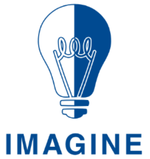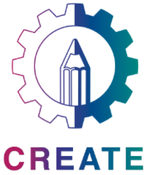The SoundScapes approach to STEAM education
Have you ever wondered what it would sound like to hear stars shining or someone's thoughts? While these phenomena don't produce sound waves, they can be translated into sound through sonification, which we’ll explore as a means for inclusive education. This approach is vital in STEAM (Science, Technology, Engineering, Arts, and Mathematics) project-based learning, shifting focus from memorization to skill development. Many students feel unmotivated due to a lack of practical applications, and the SoundScapes project addresses this by engaging students in STEM through sound and music. By teaching sonification techniques, SoundScapes enhances interest and fosters cognitive, social, and emotional skills, providing a fun, holistic learning experience that promotes creativity, collaboration, and self-esteem in a sustainable way.
STEAM education
STEM teaching is an interdisciplinary approach in education which fosters the development of skills and competencies in multiple interrelated fields through project based learning to solve real problems and challenges of our society in a responsible way. However broad, it is still not the most complete ground for the development of many other important life transversal skills and competences such as problem solving, critical thinking, collaboration and creativity, as it can miss to integrate many of students’ interests, passions and talents, such as those covered by arts, social sciences and humanities. A more comprehensive approach is embodied in the STEAM methodology, which intertwines STEM fields with the arts to cultivate a more integrated and interactive learning experience that nurtures a diverse range of cognitive, social, and emotional skills.
Artistic expression offers a great potential for developing fundamental academic, emotional, and social skills such as creativity, collaboration, communication, self-esteem, confidence, tolerance, empathy, etc[1]. For this reason, STEAM education is becoming widespread, and schools worldwide are adopting new, creative and more inclusive ways to implement it in the classroom. Nevertheless, the incorporation of arts into STEAM often remains symbolic or superficial[2], primarily focusing on aesthetics[3], thus offering a wide opportunity to delve deeper into the full educational potential of the arts. Concurrently, although the STEAM approach is increasingly popular, many teachers find it challenging to merge multiple disciplines into a cohesive project, leading to feelings of discouragement and confusion. While it is not mandatory to focus on all STEAM disciplines in one single project, it is still possible to do it and SoundScapes is meant to facilitate that. But how to implement STEAM? One meaningful and effective way to implement STEAM is through the Design Thinking method[4].
The Design Thinking methodology

The SoundScapes project's approach to STEAM education follows the four steps of Design Thinking (inspired by the Design for Change initiative): Feel – Imagine – Create and Share[5][6][7][8] Whether you engage in a brief or extensive project ranging from a couple of hours to a full year, these steps stay constant. It's important to acknowledge that, similar to many artistic processes, this isn't always a strictly linear journey; occasionally, you may move back and forth between the Feel – Imagine – Create and Share stages.
Design Thinking can be applied across various levels within the educational institution. For instance, the school administration can use it to address organizational issues. Teachers can employ it in lesson planning to develop more meaningful approaches to teaching. And students can use it to create impactful projects within their school or wider community in a creative and engaging way. Regardless of the viewpoint, the methodology typically remains consistent.
Feel

The Feel phase is the first step of the design thinking approach to a problem/topic. It entails thorough research and a deep understanding of its impact on individuals and communities from diverse perspectives. This marks the beginning of the creative journey, requiring a thoughtful selection of the approach to problem-solving. Thus, it involves empathy, curiosity, and critical thinking, as well as a comprehensive investigation of the issue from different angles and collaborative research and exploration.
When starting to explore a new problem or a topic of interest for students and their school/wider community, many questions arise naturally out of curiosity which directly relate to school curricula content even without having realized it immediately. For instance, if students are particularly concerned about the health of the natural ecosystems around school, they may face questions such as “What is the importance of protecting the environment?”, and “What are the many sources of pollution locally?”, etc. Answering these questions implies a basic understanding of a wide range of STEAM concepts, particularly in the fields of biology, ecology, energy, geography, history, etc. Motivate students to reflect collaboratively about the problem and to start their own research to gather as much information as they can about it. Research can take any form, including surveys to the community, visits to expert facilities, literature, documentaries, online labs and activities, or anything else which helps students to deepen their understanding of the problem.
In the SoundScapes context, we need to keep in mind that the end product of the whole Design thinking process must partially consist of a sonification protocol and its output. You will learn about this in detail in the next chapters. For now, it suffices to say that the sonification output can feed from data collected during the FEEL phase (e.g. light pollution data). As soon as you start collecting data, more ideas will come up along the way.
Imagine

The IMAGINE phase is dedicated to envisioning possible solutions to the problem or topic explored during the FEEL phase. As such, it involves considering the target audience, and project timeframe and scale. This is also the moment to brainstorm ideas and to collaborate with others, especially with those who are directly involved in the problem, as well as those who can contribute with diverse perspectives and ideas.
Create an open space for discussing and exploring ideas and use mind-mapping tools or any other tools which can help students to express themselves freely. Ask students to share their vision on how to approach the problem/topic and help them keep track of any new ideas which may arise. It is important to find what’s common between them to promote collaboration. To promote inclusion in the classroom it is important to offer multiple means of expression. Students can register their ideas in words, or in other formats, like drawings, music, paintings, etc. Exploring technological and digital tools, like the ones introduced in the following chapters can also trigger students’ imagination.
In the SoundScapes context, envisioning possible solutions consists partially on (1) explaining how the sonification output will somehow help to solve the problem (e.g. raise awareness about the light pollution), (2) designing the sonification protocol, (3) designing an input data collection device (if necessary) or (4) a complete real-time sonification system.
Create

The CREATE phase is where ideas and plans envisioned during the IMAGINE phase are brought to life. A decision must have already been taken about what ideas are the most suitable to approach the problem/topic. If not, it might be necessary to revisit the FEEL and IMAGINE phases. If you are set, make groups and get your hands dirty! This is the moment to start collecting tools and resources, organize ideas, and start giving them shape. While it is recommended to have a well structured plan, it is also important to allow for flexibility, as ideas can evolve during the process. Strategies include designing a step-by-step plan, predicting challenges, analyzing progress, and adjusting the plan as needed. It is also helpful (and fun!) to document everything in a journal, including pictures and videos.
If students have not yet explored any sonification tools before, this is also the right moment to start and finalize their explorations of the SoundScapes’ proposed tools and sonify their data. There are many components to the creation phase and to data sonification, so not everyone has to contribute in the same way. Some students may want to simply write some code, or learn more about acoustics and music theory, while others wish to improve their

The SHARE phase is the final step in the design thinking methodology. This is where the ideas and the results of the process (and whenever meaningful, the process too) are presented to the target audience. Therefore, it is necessary to decide how to present and to whom, which involves creating a dissemination plan and developing marketing skills, together with communication and creativity skills. Importantly, the Sharing phase also includes the celebration of the project's outcomes.
There are many possible ways of sharing the final results of the project, for instance through videos, theater, songs, art exhibitions, conferences and interactive sound installations or live performances in general. In the context of soundscapes, two important aspects of the result are the sonification protocol and its sound output. Sharing the sonification protocol is crucial for understanding the sonification output. Neglecting this, can undermine the whole purpose of sharing. Importantly, be inclusive and allow for multiple means of expression, as this phase is a great opportunity for students to shine with their unique talents and reach a diverse audience. Moreover, although the sonification output is a key element in the context of SoundScapes it can also serve to complement other forms of expression as well, for instance as the soundtrack of a documentary, or a theater play.
Sharing at a local or international level can occur simultaneously. This phase plays a vital role in enriching the entire process and it is crucial for gathering valuable feedback, helpful for discussing the significance of the results, the meaningfulness of the process and to guide decisions on whether to revisit the entire process, or replicate it at a different scale, with a different target audience, etc. Sharing amplifies the educational value, helping students to better internalize the knowledge, skills, values, attitudes and competencies acquired in the process, as well as to find joy in the creative journey. This also fosters a sense of pride in their accomplishments, which further nurtures their motivation to learn and their community-oriented mindset. Engaging the local community and families is a great opportunity to transcend mere passive support, providing an avenue for knowledge exchange and mutual empowerment when addressing local issues.
References
- ↑ Dincç, N. D., & Karahn, Ç. . (2021). Art integration applications in middle school 5th class science lesson. International Journal of Social Sciences and Education Research, 7(2), 141-150
- ↑ Liu, C. Y., Wu, C. J., Chien, Y. H., Tzeng, S. Y., & Kuo, H. C. (2021). Examining the quality of art in STEAM learning activities. Psychology of Aesthetics, Creativity, and the Arts
- ↑ Perignat, E., & Katz-Buonincontro, J. (2019). STEAM in practice and research: An integrative literature review. Thinking skills and creativity, 31, 31-43
- ↑ Henriksen, D. (2017). Creating STEAM with design thinking: Beyond STEM and arts integration. The STEAM Journal, 3(1), 11.
- ↑ Gudipati, M., & Sethi, K. B. (2016). Adapting the User-Centered Design Framework for K-12 Education: The Riverside School Case Study. In Taking Design Thinking to School (pp. 112-120). Routledge.
- ↑ Doran, P., Tsourlidaki, E., Mentxaka, I., Vicênte, T., Gomes, M. & Doran, R. (2021). Design Thinking in STEAM education: A legacy from the Islands Diversity for Science Education project. Ellinogermaniki Agogi. ISBN: 978-960-636-172-2
- ↑ Robberstad, J., Doran, P., Ben-Horin, O., Sotiriou, M., (2021). O2 The GSO4SCHOOL Teachers’ Guidelines. The Global Science Opera Leverage students participation and engagement in science through art practices (GSO4SCHOOL). Co-funded by the European Union, Grant Agreement no 2019-1-NO01-KA201-060170. https://gso4school.eu/wp-content/uploads/2021/O2_D2_1/D2_1_GSO4SCHOOL_Teachers_Guidelines_Final.pdf
- ↑ Design for Change (2009). https://dfcworld.org/.